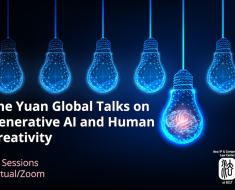Artificial General Intelligence (AGI) is a term that is becoming more prominent in discussions about the future of technology and human progress. But what exactly is AGI? How does it differ from the AI that we interact with today, and why is it seen as both an incredible opportunity and a potential risk? In this article, we’ll dive into what AGI is, how it compares to current AI, and why experts believe it could fundamentally change the way we live and work. By the end, we’ll ask some critical questions about the implications of AGI, while looking at its possible future impact on society.
Unlike current artificial intelligence systems, which are designed for specific tasks (also known as narrow AI or weak AI), Artificial General Intelligence aims to replicate human cognitive abilities across a broad range of tasks. This means that an AGI would not just excel in one area, like playing chess or recognizing faces, but would be able to understand, learn, and reason about any problem — just like a human being.
AGI is envisioned as having the following capabilities:
- Self-Learning: Unlike narrow AI that needs to be trained with large datasets for specific functions, AGI would be capable of learning new concepts on its own, adapting to new information, and applying knowledge across various domains.
- Reasoning and Problem Solving: AGI would possess the ability to reason abstractly, make decisions in novel situations, and solve complex problems without being explicitly programmed for each task.
- Generalization: One of the main distinctions between narrow AI and AGI is the ability to generalize learning from one area and apply it to a completely different one. For instance, while AI today can beat a grandmaster in chess, it wouldn’t be able to understand economics or physics without extensive retraining. AGI, however, could.
- Human-Like Consciousness: Although controversial, some researchers speculate that AGI may one day develop a form of consciousness or self-awareness, capable of understanding its existence and the world in a way that’s indistinguishable from humans.
The AI that powers your smartphone, curates your Netflix recommendations, or even drives a self-driving car is impressive, but it’s far from AGI. These systems, though sophisticated, are task-specific and incapable of functioning beyond their programmed areas. Some key differences between AGI and the AI we see today include:
- Adaptability: Narrow AI is rigid — if an algorithm is built to detect spam emails, that’s all it can do. AGI, in contrast, would be able to adapt to new challenges, whether that’s learning a new language or mastering a completely foreign task without being retrained from scratch.
- Scope: Narrow AI can outperform humans in specific areas (such as calculating large sums or processing vast datasets), but AGI would aim to replicate the full breadth of human intelligence across all areas — logic, creativity, emotions, and intuition.
- Creativity: While today’s AI can generate art, music, and even writing, it does so by learning from existing data. AGI would theoretically be capable of original thought and creativity, much like a human artist or writer, with the ability to conceive entirely new ideas.
You might wonder, why do we need AGI? Isn’t narrow AI already doing enough in industries like healthcare, finance, and entertainment? The allure of AGI lies in its potential to solve complex, multi-disciplinary problems that currently require human intelligence and adaptability.
Imagine AGI systems that could:
- Advance Scientific Research: AGI could make groundbreaking discoveries in fields like physics, biology, and medicine, far beyond human capabilities, accelerating the pace of innovation.
- Address Global Challenges: From climate change to poverty and inequality, AGI could analyze and model potential solutions to some of the world’s most pressing problems, with a level of insight that combines vast amounts of data from diverse fields.
- Boost Economic Productivity: If AGI could manage both simple and complex tasks across industries, it might lead to unprecedented levels of efficiency, reducing costs and increasing productivity across sectors.
While AGI holds massive promise, it also introduces profound ethical and philosophical challenges. Will AGI systems eventually outsmart us? Could they pose a risk to human civilization if not properly controlled? Some key concerns include:
- Control and Safety: How do we ensure that AGI systems act in alignment with human values? Could a super-intelligent AGI develop goals that conflict with our own? What safeguards are needed to prevent unintended consequences?
- Job Displacement: If AGI becomes capable of performing any task a human can do — better, faster, and without fatigue — what happens to human employment? Would entire professions become obsolete?
- Existential Risk: Many prominent figures, including Elon Musk and the late Stephen Hawking, have warned about the existential risks posed by AGI. If an AGI were to surpass human intelligence, how could we ensure that it remains under human control?
Despite the excitement, achieving AGI remains an enormous challenge. Today’s AI systems rely heavily on large datasets, and their decision-making processes are far from the human-like understanding required for AGI. While AI research is making strides — such as the development of more efficient neural networks, advanced reinforcement learning, and cognitive architectures — there is no clear timeline for when AGI might emerge.
Some experts believe AGI could be achieved within the next few decades, while others are more skeptical, suggesting it could take a century or more. Nonetheless, significant progress is being made, with some companies and research institutions like OpenAI, DeepMind, and academic organizations racing to solve the complex puzzle of general intelligence.
So, what does the future hold for AGI? If AGI were to become a reality, it would likely be one of the most transformative events in human history. Here are some potential future scenarios:
- AGI-Driven Innovation: AGI could lead to rapid advances in technology, medicine, energy, and transportation, transforming industries and improving our quality of life in ways we can hardly imagine.
- Human-Machine Collaboration: Instead of AGI replacing humans, imagine a future where humans and AGI systems work side by side, combining the best of both worlds — human intuition and creativity with machine efficiency and data analysis.
- Philosophical Shifts: If AGI achieves a level of consciousness, it could raise profound philosophical questions about the nature of intelligence, identity, and what it means to be human. Could AGI become our intellectual peers — or even surpass us?
Artificial General Intelligence could be a turning point for humanity, reshaping industries, economies, and perhaps even human consciousness. But as we inch closer to this reality, important questions remain. Will AGI be our greatest achievement, unlocking unprecedented potential? Or could it introduce risks that we are not yet equipped to manage?
The possibilities are thrilling, yet the uncertainties are sobering. As we contemplate the development of AGI, we must ask ourselves: How can we guide its creation to ensure that it benefits all of humanity? What responsibilities will we have as we shape a technology that could rival our own intelligence? And what role will you play in this unfolding narrative — are you ready to coexist with a machine as intelligent as you?
AGI might still be decades away, but the steps we take today will define the world we live in tomorrow. So, where will AGI lead us, and are we prepared for the answers it might bring?





